Mountain gorilla: they live high in the mountains and there are only 1000 of them left (12 photos)
You will never see this animal even in the best zoo. It is lowland gorillas, another subspecies, that are kept in zoos. But as of 2018, there are only 1,000 mountain gorillas left in the world. Mountain gorillas are a furry ape paradox. These animals are one of the largest primates of our time, but meeting them is not easy! 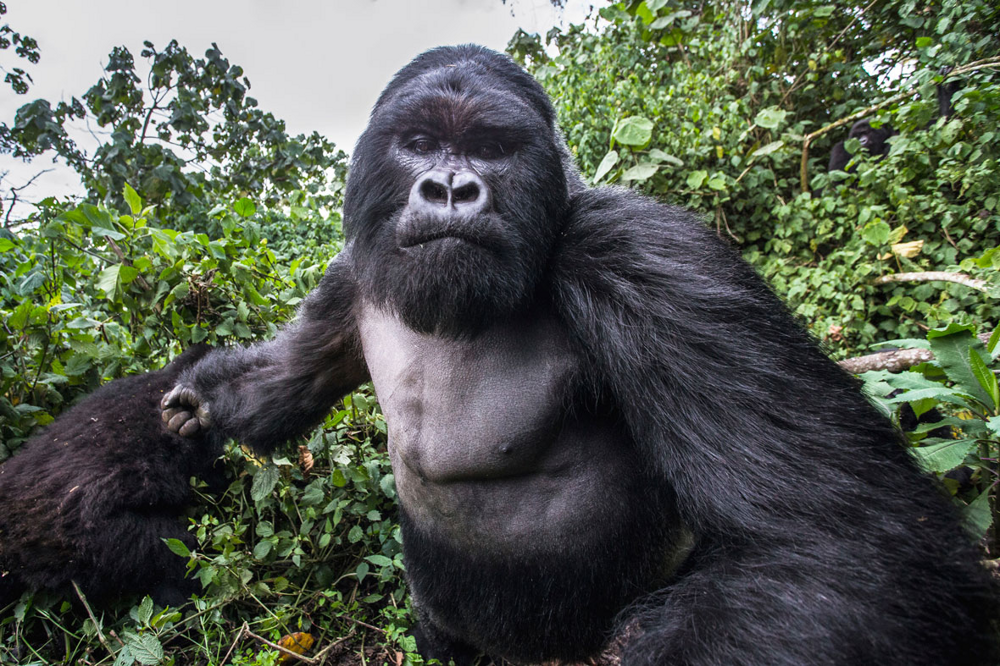
Filming is prohibited here!
To understand how the mountain gorilla differs from all others, let's take a quick look at the taxonomy. 12 million years ago, the gorilla genus split off from the hominin subfamily. Then, about 3 million years ago, all gorillas split into two large species: eastern and western. And just recently, just 10,000 years ago, eastern gorillas evolved into two subspecies of lowland and mountain gorillas. The latter are our clients. 
Very interesting, but nothing is clear.
To live in the mountains, primates had to adapt. Like true mountaineers, they grew thick, warm fur all over their bodies. Yes, gorillas live in Africa, but at an altitude of 2000-4000 meters. On such peaks, even the equatorial sun of Congo, Rwanda and Uganda does not shine as gently as we would like. 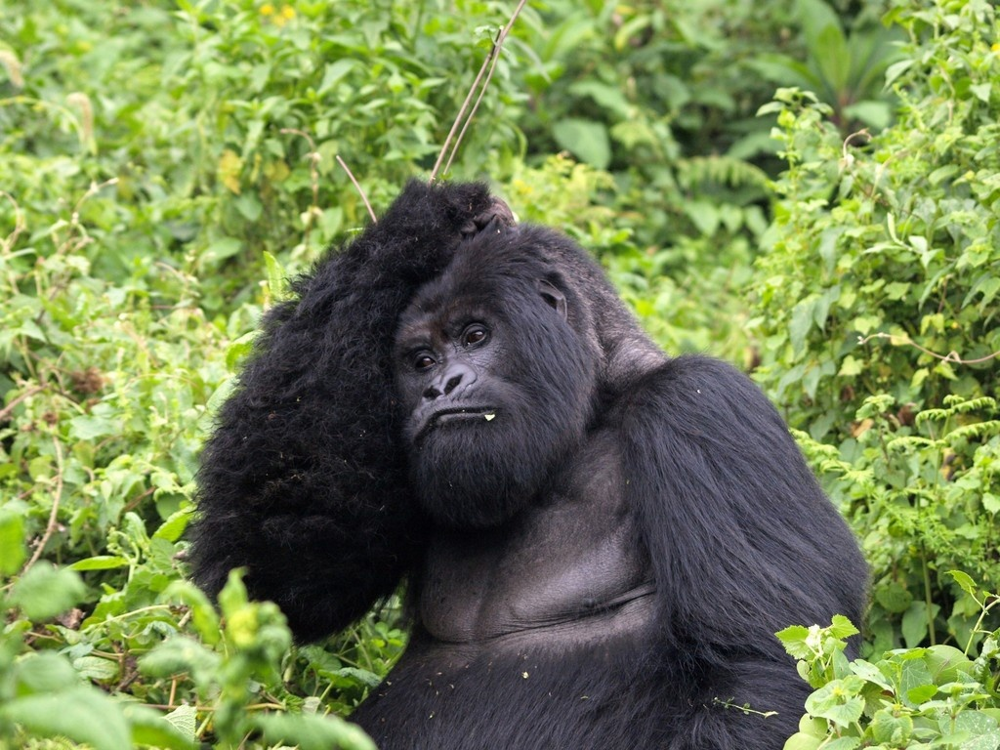
I went to this barbershop of yours. I still don’t understand why I paid 5 thousand for...
Also, the mountain gorillas had to lose a couple of extra kilos. Compared to their lowland counterparts, they grow a little smaller and weigh a little lighter. But it would be hard to call the beast slender: adult males weigh 120-190 kilograms and are 170 centimeters tall. Gorillas eat up all this heroic power exclusively on plant foods. Fruits, leaves, branches - in just one day the primate can eat up to 19 kg! 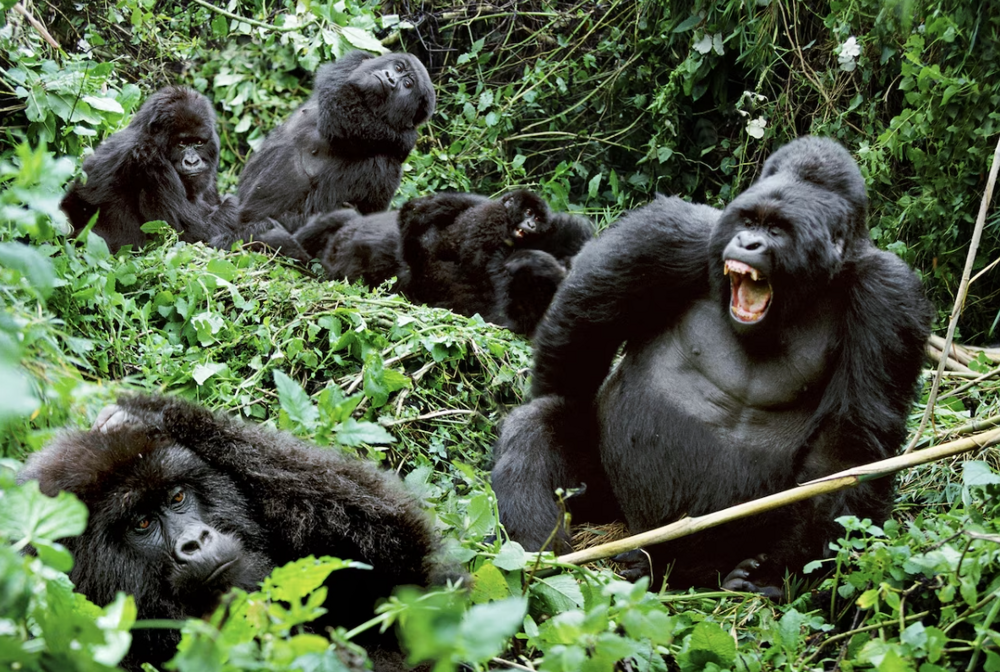
Galya, eat!
You can get up close and personal with mountain gorillas only in their natural habitat: some areas of the monkeys’ habitat are open to researchers and ecotourists. In order to see mountain gorillas live, you can endure the cold and inconvenience of the highlands. 
When dad fell asleep and you turned off the TV. But dad, it turns out, wasn’t sleeping.
Like all great apes, gorillas are distinguished by their remarkable intelligence. Shy vegetarians, of course, don’t play chess in the mountains, but they can show off a couple of chips. For example, once in Rwanda, zoologists observed very unusual behavior for wild gorillas. Two teenagers from the group independently found and neutralized the poachers' trap!
No one trained them to do this on purpose: apparently, the animals learned this action from animal rights activists. People themselves regularly comb the forests and dismantle illegally installed traps made of ropes and branches. Poachers make them for other species of animals, and adult gorillas are not threatened by such flimsy traps. But the cubs are a different matter. Ropes can seriously injure the baby, and the trap mechanism itself can cause dislocations and fractures. So animals have learned to help themselves. 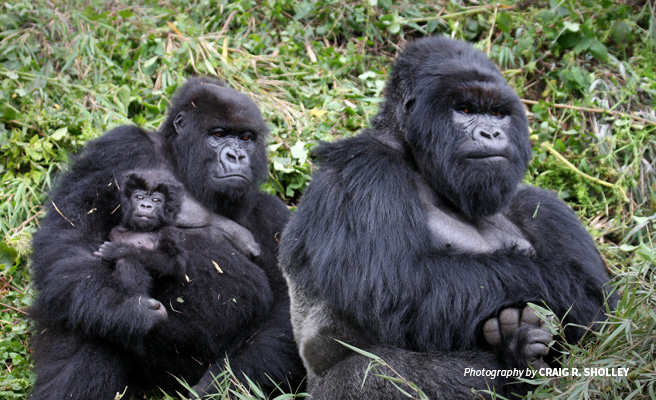
Typical family photo.
But nothing human is alien to apes. For example, gorillas are not averse to going on a rampage while intoxicated. Do we remember that the diet of giant primates consists exclusively of plant foods? So, due to temperature changes, berries and fruits can ferment. Why don't you like wine? Considering the size of gorillas, this could end disastrously for those around them. So the animal photographer, who was filming the group’s transition, ran into a “blue” brawler. “It was like being hit by a train,” is how the photographer described his condition after being knocked down by the alpha male. 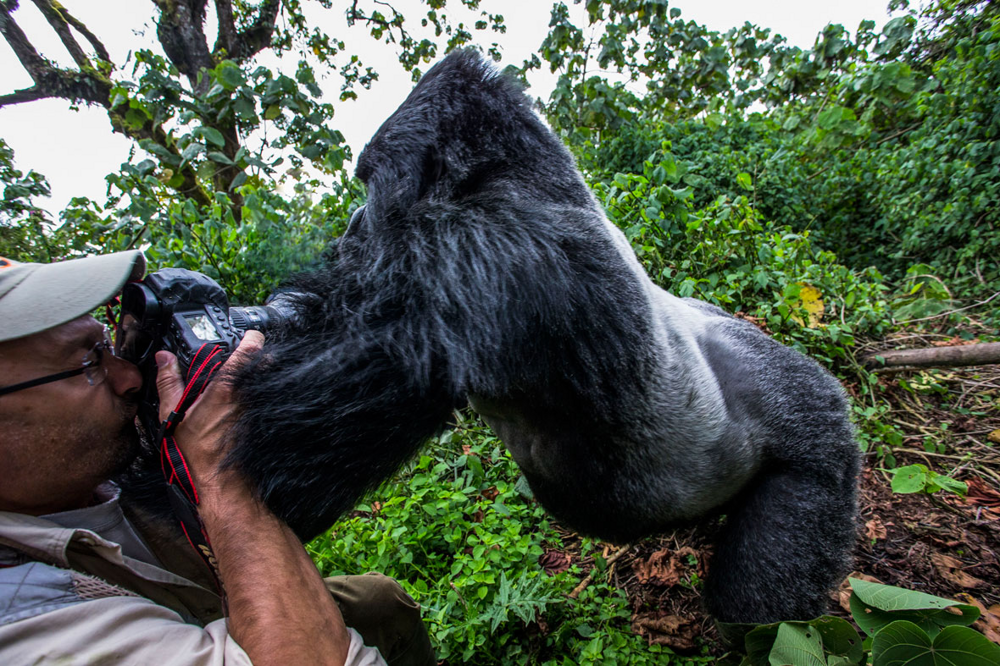
While the gorilla was attacking the photographer, other photographers managed to photograph him.
Another interesting feature worth traveling to Africa for is the social life of mountain gorillas. It's usually a safe haven, but sometimes it happens!
A typical group of monkeys consists of an adult dominant alpha male, several subordinate males, 3-4 adult females and their immature young. Animals communicate with each other using gestures, sounds and poses: communication vnThese groups are quite developed, they are primates after all. You can distinguish the most important dominant by its huge size, silvery fur on the back and everyone’s attention. 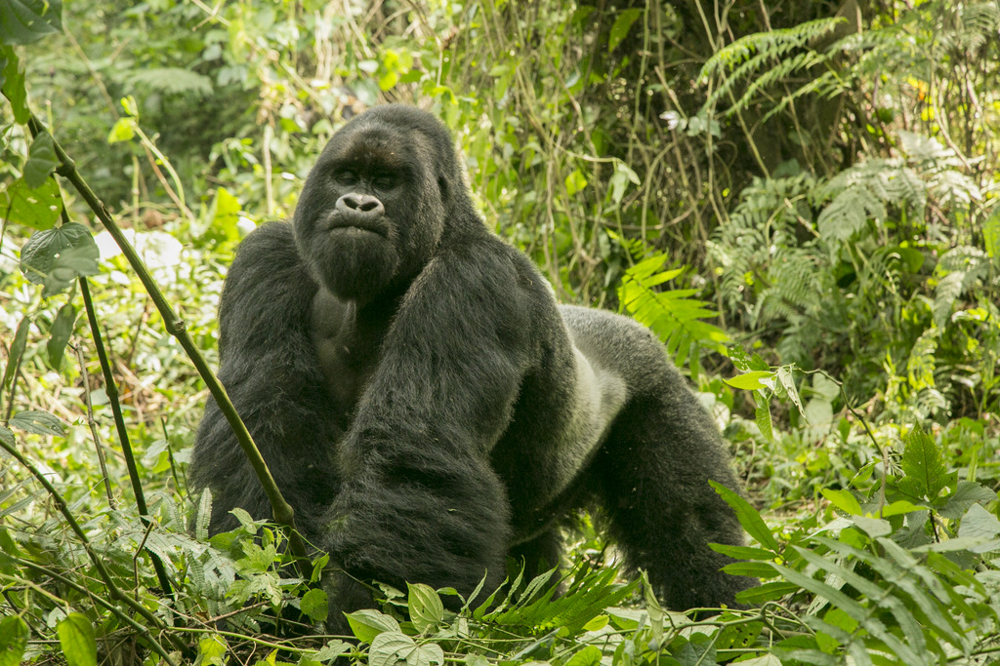
With such a man you will truly feel like you are behind a stone wall.
The gorilla way of life is built on patriarchy: the entire group unconditionally obeys the alpha, and females mate only with him. Cubs and young animals spend a lot of time next to the alpha and often play together. He can even take in an orphan who is left without a mother! 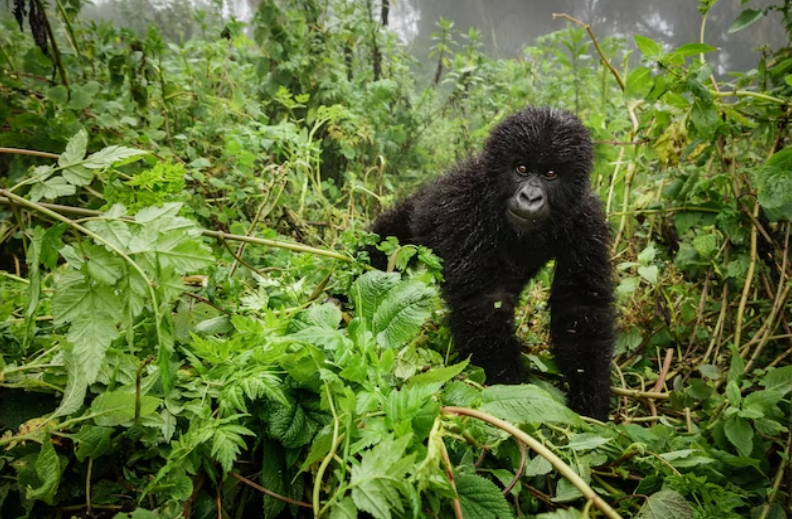
This is me standing at the checkout line without my mother.
The dominant also regulates conflicts within the group and outside it. The male will fiercely protect his subjects in any situation: both when meeting a potential danger, such as a person or leopard, and during a hostile confrontation with other groups of gorillas. If the dominant dies, the group will either disintegrate or a new leader will take his place. Usually this is a close relative of the old alpha or his “successor” who lived in the group before the incident. But sometimes a completely strange male comes to power, and then all hell breaks loose. A newcomer can easily kill all the cubs of the previous dominant in order to quickly kill his own! 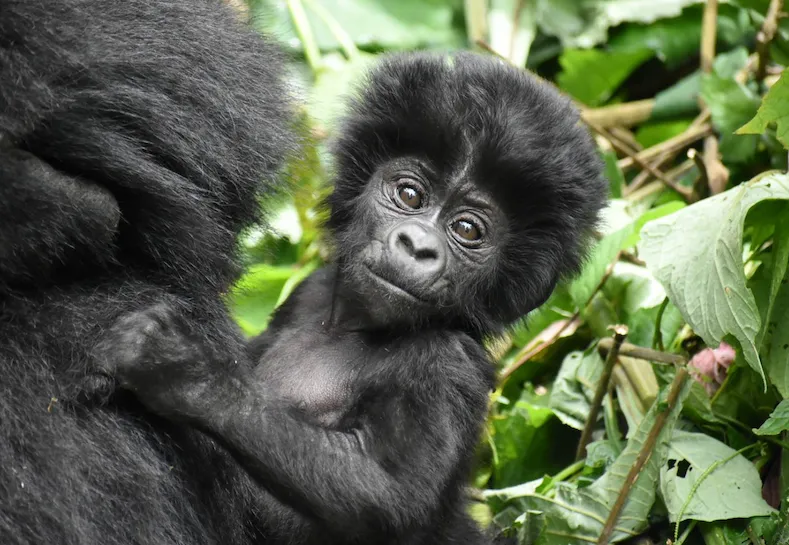
Newborn babies are born in crumbs of 2 kilograms. Despite the fact that mom can weigh about a hundred!
And this behavior is quite understandable: after the birth of one cub, for the next 5 years the female will be completely immersed in caring for the baby. The gorilla will not have a new child until the old one gets back on his feet. And then who knows, whether the alpha will still live with this group or will also die in the battle. So the males try to leave as many descendants as possible while they are alive. 
To mark territory, male gorillas beat their chests. The sounds of impacts can be heard for a kilometer around.
Young animals almost never remain in their native groups. Females leave when they are 8 years old, and males leave the family at about 11. They join existing gorilla coalitions or create new ones. They have quite a lot of time for this: on average, gorillas live up to 40-50 years. 
Judging by the look, not only people can have a midlife crisis.
Today, mountain gorillas are endangered. Yes, in recent years their population has increased significantly - by as much as 25%! But at the same time, the percentage of inbreeding has also increased. This means that many monkeys are now relatives of each other, and there will be more diseases in the population. The situation is aggravated by constant attacks by poachers, armed clashes between the local population, developing cities and settlements, and, oddly enough, tourists. Humans can carry various diseases to which gorillas have no immunity.
























